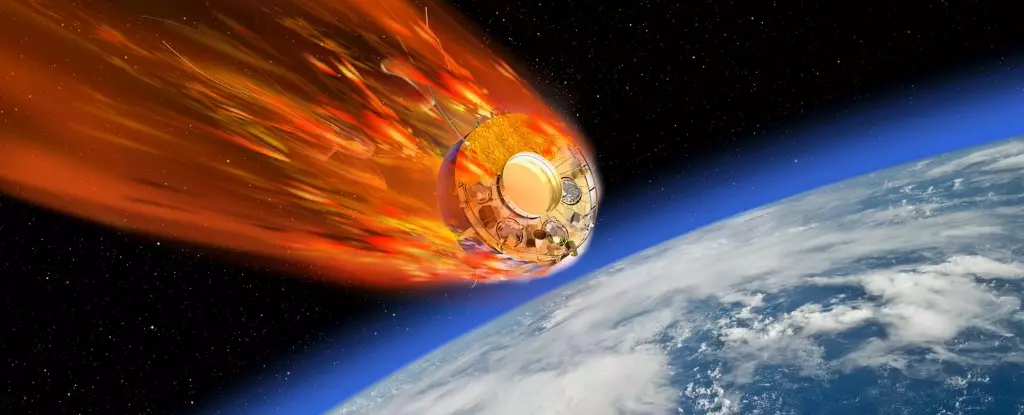In the turbulent era of the Cold War, space exploration was not merely a scientific endeavor; it was a battleground for ideological supremacy. Between the 1960s and 1980s, the Soviet Union dedicated immense resources and ingenuity to its Venera program—an ambitious pursuit aimed at exploring Venus, the planet that has often been dubbed Earth’s “twin sister.” This fascination was ignited not just by scientific curiosity but also by the desire to showcase the prowess of socialist science. This venture resulted in the launch of 29 spacecraft towards Venus. The spacecraft’s fates varied dramatically: some achieved stunning successes, while others met ignoble failures, trapped in Earth’s orbit or incinerated upon reentry.
Among these missions, Venera 7 made history by being the first-ever spacecraft to soft-land on another planet in 1970, sending invaluable data back to Earth through an environment often deemed hellish—where temperatures soar above 450°C and pressures are 90 times that of Earth. Yet, one spacecraft, Kosmos 482, launched in 1972, has raised eyebrows not merely for its ambitious intentions but for its long-standing resilience. Unlike its sibling spacecraft, Kosmos 482 failed to escape Earth’s orbit and became an isolated remnant, enticing scientists and space enthusiasts alike with the mystery of its fate.
The Unraveling Mystery of Kosmos 482
Kosmos 482’s operational journey was, from the outset, fraught with miscalculations. The upper rocket stage designed to push it beyond Earth’s gravitational grasp shut off too early, resulting in a catastrophic failure. Yet, rather than falling completely into the annals of forgotten space debris, this lander has danced for over fifty years in a high-elliptical orbit, spanning from nearly 9,000 km at its farthest to a present distance of about 2,000 km. Interpret this as an unintentional tribute to the engineering brilliance of its creators—crafted to withstand the blistering heat and pressure of Venus, it has unexpectedly become a relic lingering in Earth’s gravitational embrace.
The fate of Kosmos 482 grows ever closer, as recent predictions suggest it may make a fiery reentry into Earth’s atmosphere shortly. Although designed for the extreme conditions of Venus, the spacecraft is neither equipped for controlled descent nor protected from the intense thermal dynamics of reentry. As it plummets toward Earth, the questions surrounding its reentry become poignant. Will its titanium frame endure the searing heat, similar to the “space balls” that survived their descent in New Zealand in the early 1970s, or will it become lost with the others in an unseen fate?
Reflections of Cold War Anxiety
The story of the Venera program is interwoven with the fabric of Cold War fears—manifesting not only in technological race but also in cultural narratives that projected the unknowns of space as perilous. In cinema, Venus has often been portrayed as a dangerous domain. Films like “The Silent Star” presented it as a breeding ground for hostile extraterrestrial beings, while other narratives utilized the notion of resurrection and radiation as allegories for Cold War anxieties. The Soviet Venera missions, in their quest to understand the planet, mirrored these sentiments, professing both the scientific risks of interstellar exploration and the ideological implications of space exploration—how humanity’s ambitions could simultaneously symbolize hope and potential devastation.
In recent years, however, our anxieties have shifted. Today, the dialogue surrounding space has expanded to include the omnipresent threat of space debris—the remnants of our advances that now pose environmental hazards. With rockets launching at unprecedented frequencies, and satellites like Starlink becoming commonplace, the legacy of past missions must now wrestle with the implications of our prolific explorations. While Kosmos 482’s fate looms, there exists greater concern regarding how our ventures into space leave indelible marks on both the cosmos and our terrestrial home.
The Ongoing Quest for Knowledge
Despite the uncertain fate of Kosmos 482, the spirit of exploration continues to thrive. The legacy of the Venera missions cannot be understated; they opened the door to understanding not just our neighboring planet, Venus, but also prompted a broader inquiry into the realm of astrobiology. What lay beneath those thick clouds? Is there life lurking in the oppressive atmosphere, or echoes of past volcanic activity?
As we await the culmination of Kosmos 482’s journey, it serves as a poignant reminder of humanity’s endless quest for knowledge. The thirst for discovery, whether through advances in technology or the pursuit of understanding extraterrestrial environments, is a narrative that transcends the past and influences our present. The hopes and fears illustrated by these historical missions shape our future aspirations and encourage a reformed relationship with our exploration of the cosmos—one in which we ask: what has the universe yet to teach us?

